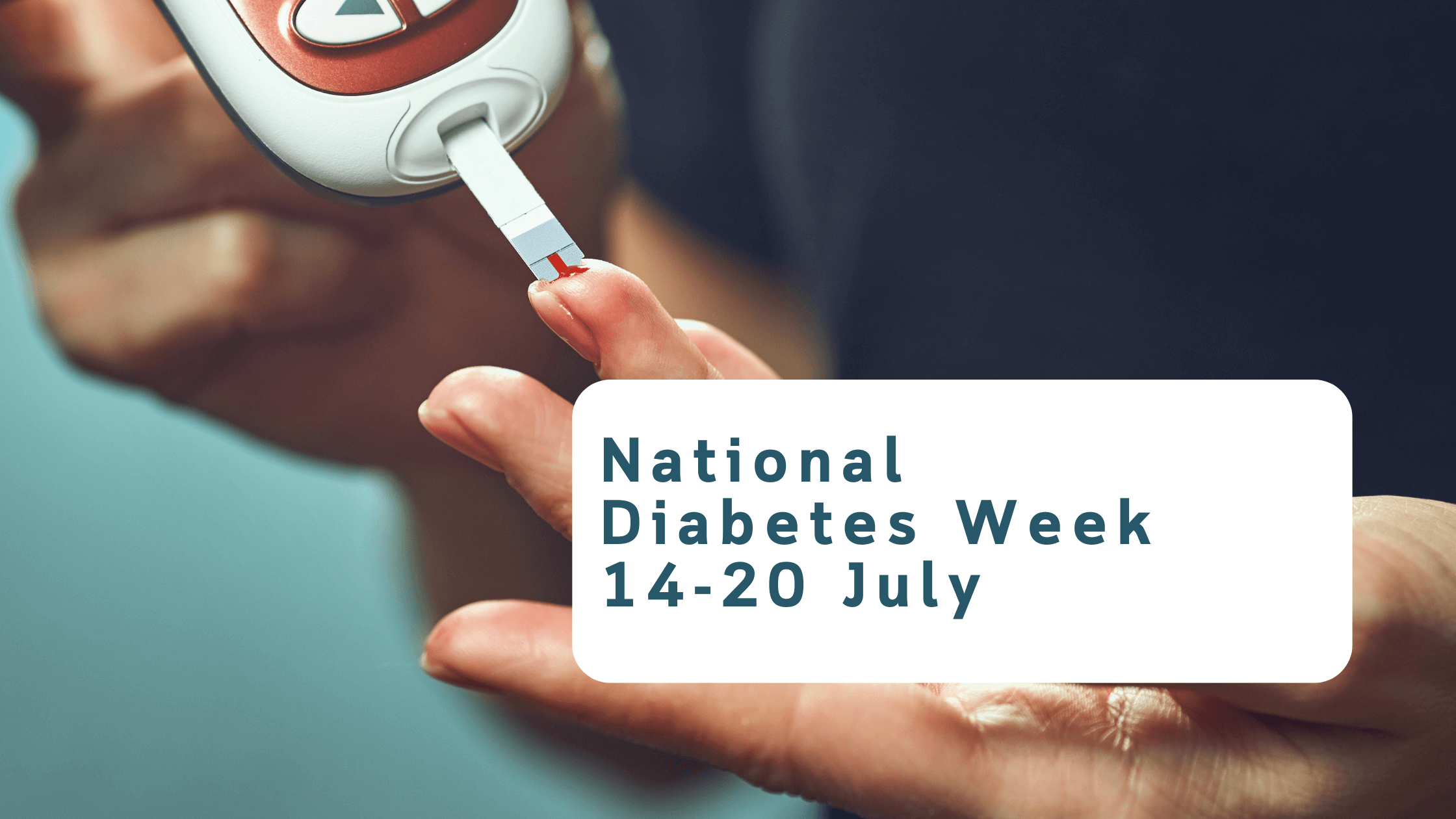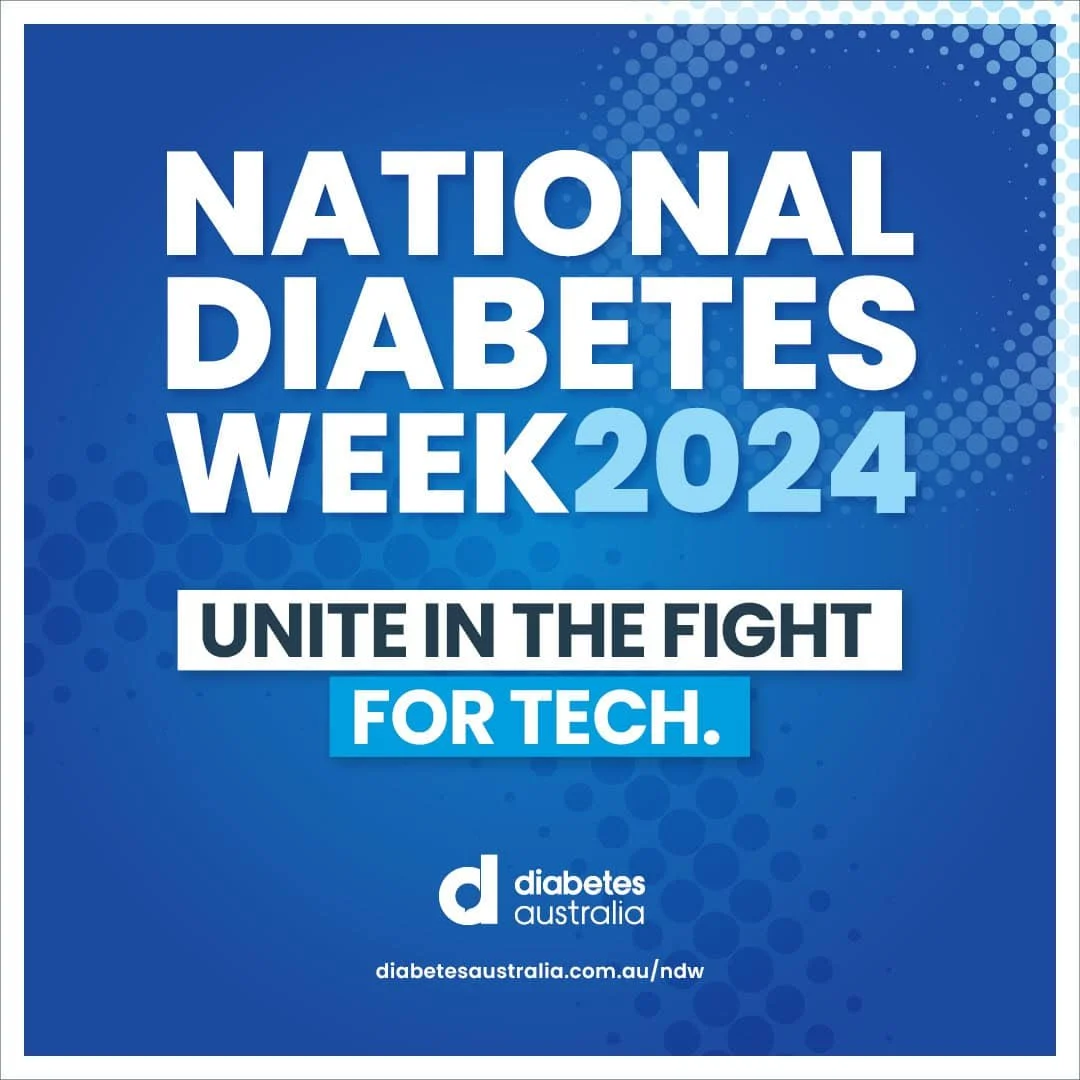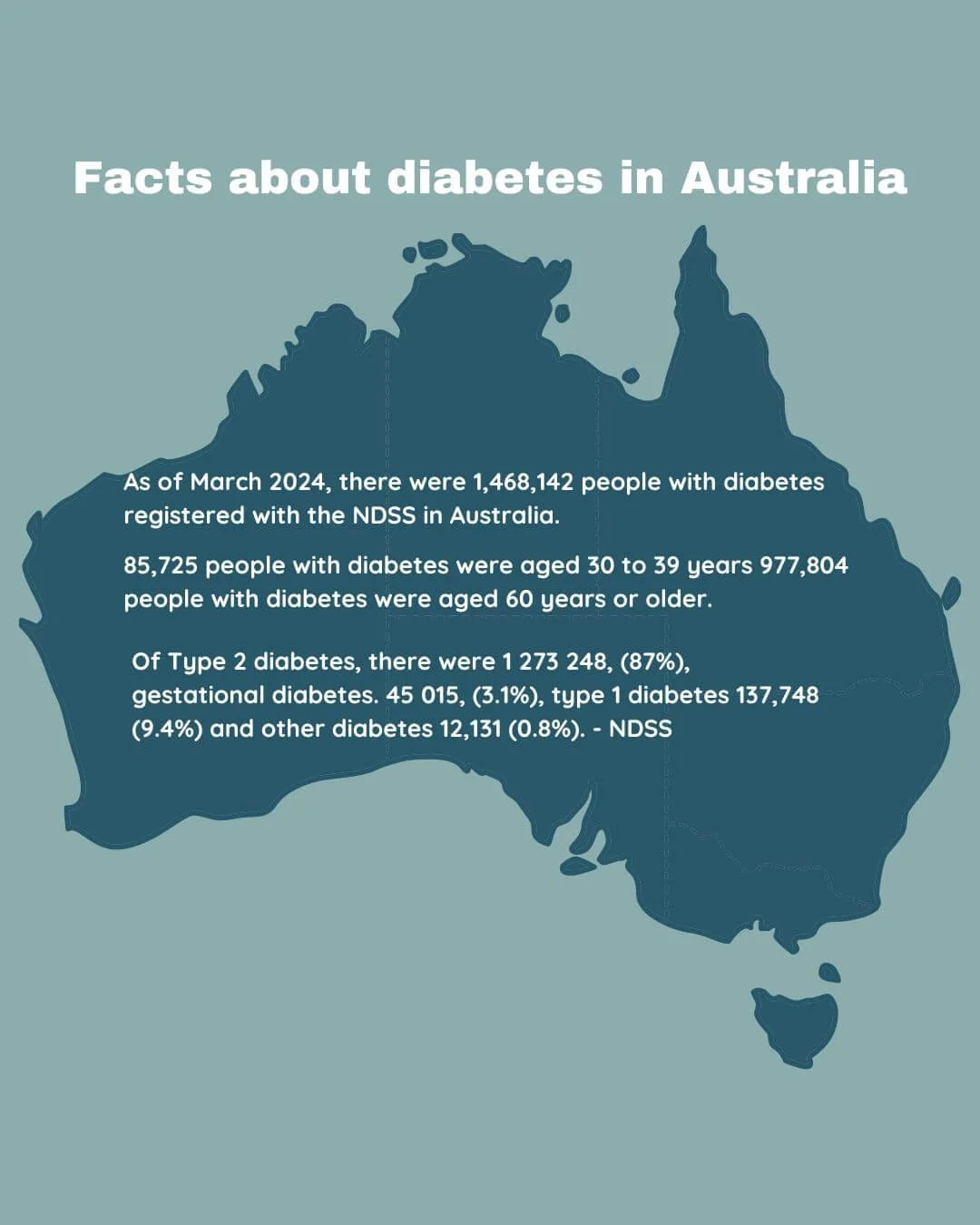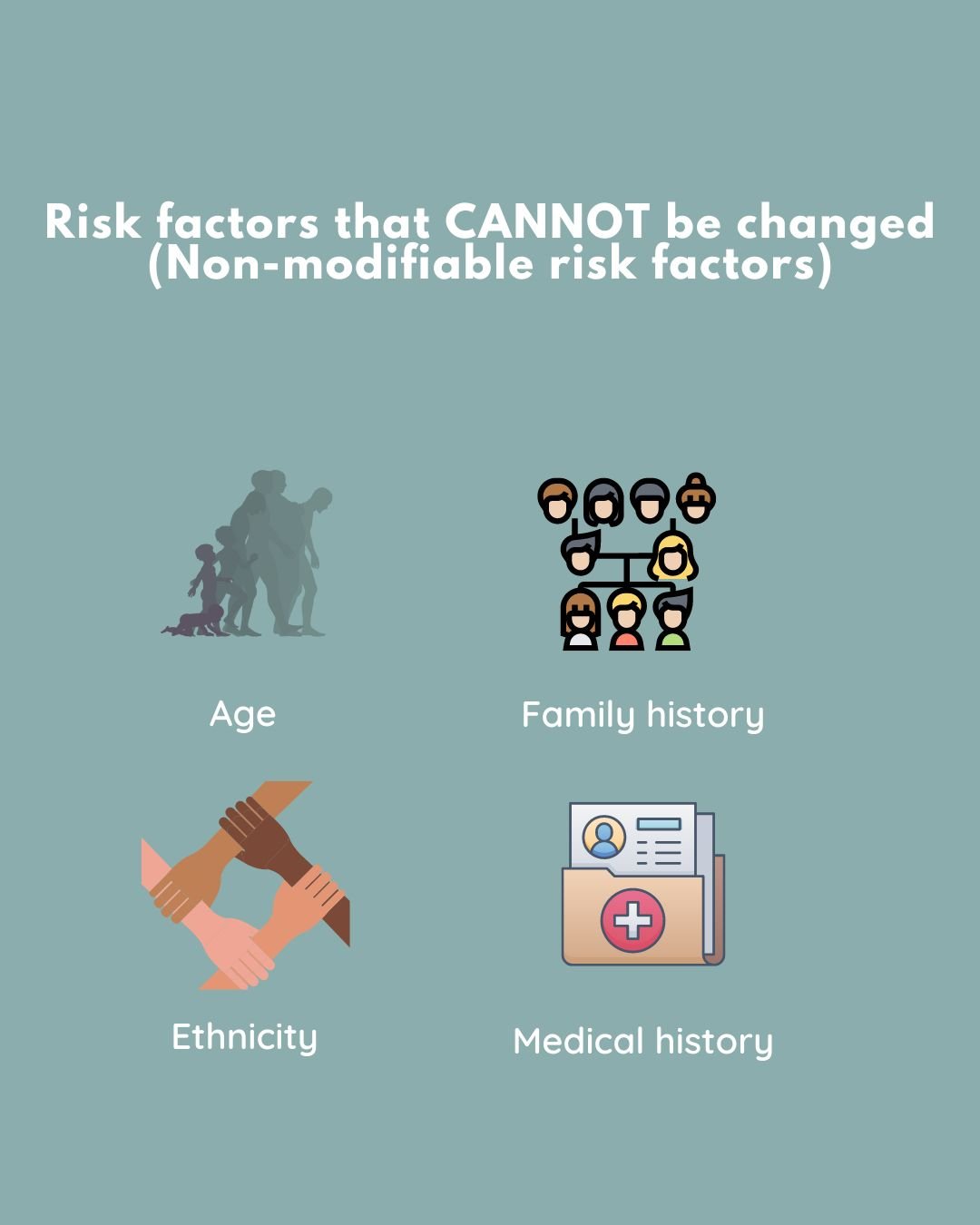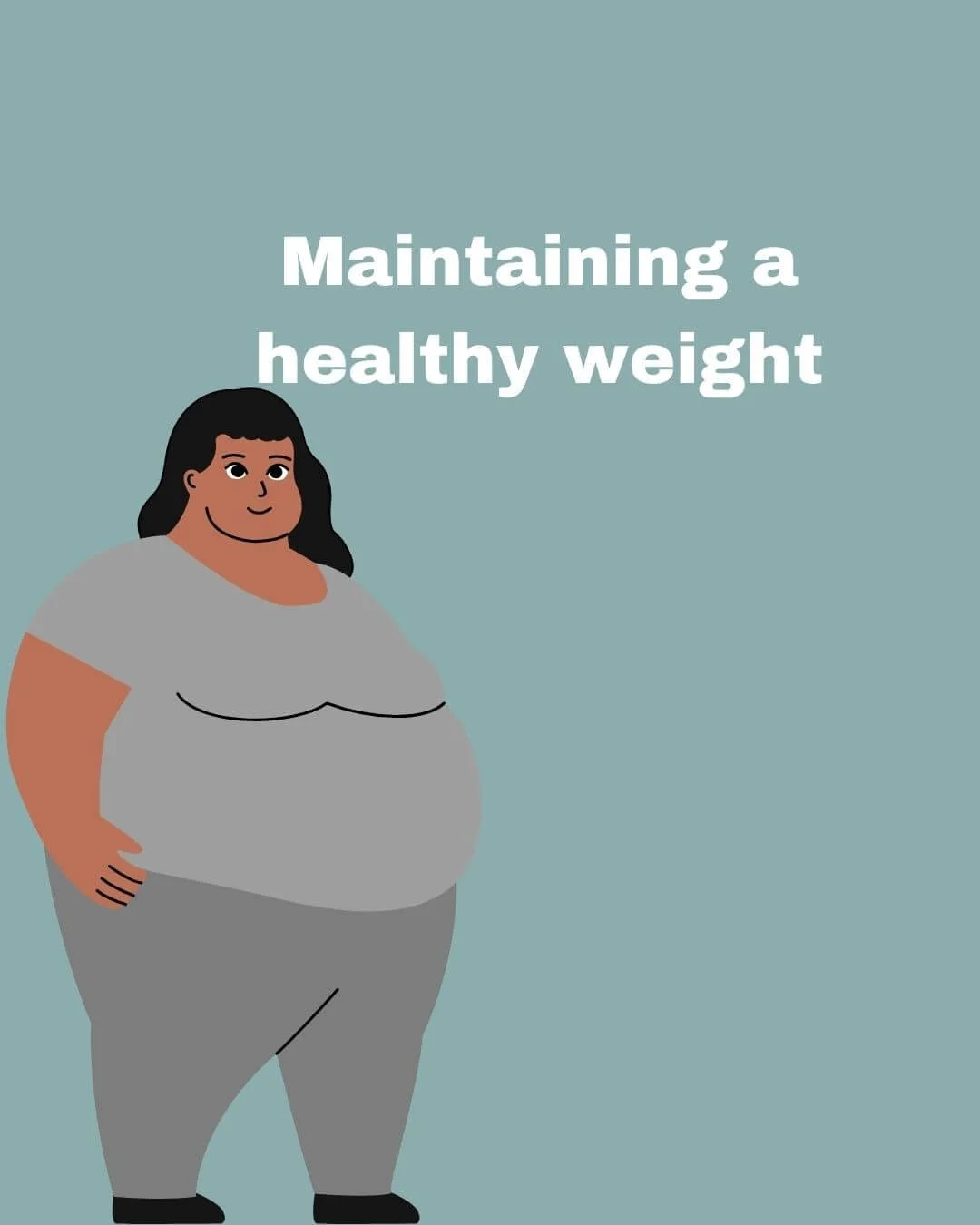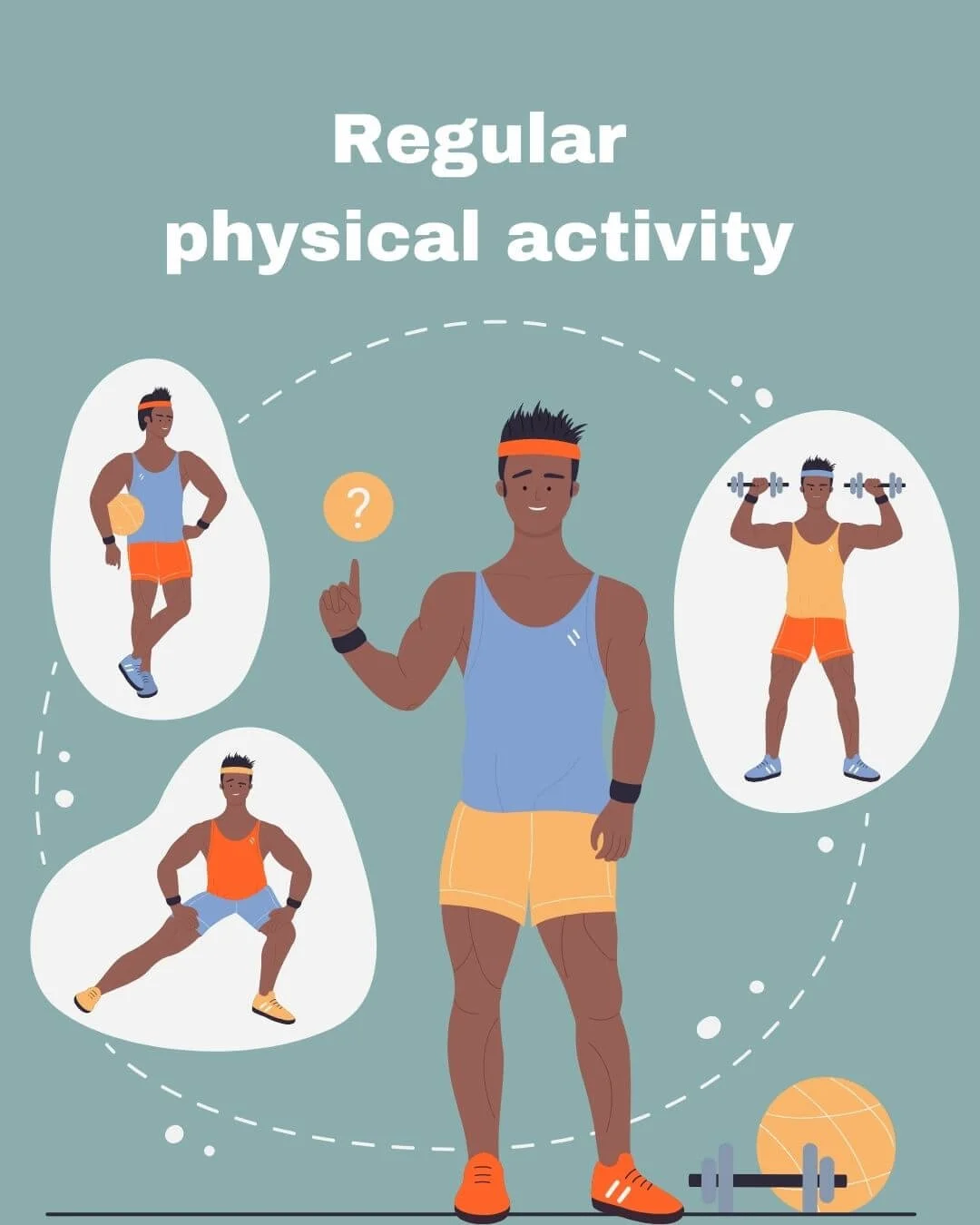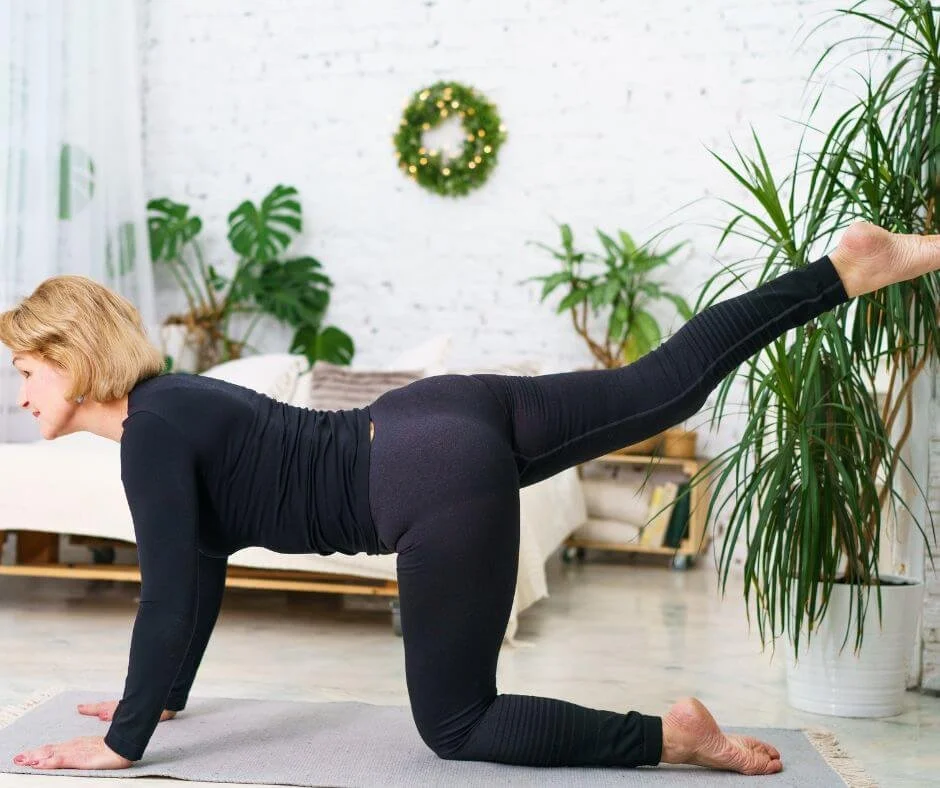National Diabetes Week
14-20 July
Diabetes Australia is calling on all Australians to support the campaign and help to raise awareness of diabetes during National Diabetes Week. - Australian Diabetes
Australians living with all types of diabetes should have equitable access to the technology they need to live well.
Right now they don’t and this needs to change.
Right now in Australia, access to diabetes technology isn’t fair and equitable. Some people have technology like CGM devices and insulin pumps, while others go without. - Diabetes Australia
What is diabetes?
Diabetes mellitus, or diabetes, is a condition where there is too much glucose in the blood.
The body can’t make insulin, enough insulin or is not effectively using the insulin it does make.
Over time high glucose levels can damage blood vessels and nerves, resulting in long term health complications including heart, kidney, eye and foot damage. - Diabetes Australia
‘Diabetes is a serious and chronic condition which can affect the entire body. While there is currently no cure, you can live an enjoyable life by learning about the condition and effectively managing it.
Diabetic myths
Myth # 1 - You have to be overweight to develop diabetes.
Fact – Although being overweight is a risk factor (especially for type 2 diabetes) it’s not necessary the main cause and having type 1 diabetes is not associated with weight.
Myth # 2 - Diabetes can be prevented
Fact – Type 1 is an autoimmune condition; it cannot be prevented. There is not one single cause of type 2 diabetes.
Myth # 3 - Diabetes is not serious
Fact – All types of diabetes are serious and can lead to complications if not well managed.
Myth # 4 - Eating too Much Sugar Causes Diabetes
Fact - Type 1 diabetes occurs when the pancreas does not produce insulin, type 2 diabetes is diagnosed when blood glucose levels are high due to insulin produced by the pancreas not working effectively and/or the cells of the body do not respond to insulin effectively (known as insulin resistance), over time the condition progresses and the pancreas does not produce enough insulin (reduced insulin production)
Myth # 5 - You only get type 1 diabetes when you’re young
Fact – The onset of type 1 diabetes occurs most frequently in people under 30 years, however new research suggests almost half of all people who develop the condition are diagnosed over the age of 30.
Myth # 6 - You only get type 2 diabetes when you’re old
Fact – Type 2 diabetes usually develops in adults over the age of 45 years but is increasingly occurring in younger age groups including children, adolescents and young adults.
Myth # 7 - No one in my family has diabetes so I don’t have to worry
Fact – Family history is only one of the risk factors for type 2 diabetes.
For more myths about diabetes please call our Infoline 1800 177 055.
To find a Credentialled Diabetes Educator in your area, contact the Australian Diabetes Educators Association
Facts about diabetes in Australia
As of March 2024, there were 1 468,142 people with diabetes registered with the NDSS in Australia.
9,408 people with diabetes were aged 15 years or under
18,000 people with diabetes were aged 20 years or under
33,235 people with diabetes were aged 21 to 29 years
85,725 people with diabetes were aged 30 to 39 years
977,804 people with diabetes were aged 60 years or older.
Of type 2 diabetes, there were 1 273 248, (87%),
gestational diabetes, 45 015, (3.1%),
type 1 diabetes 137,748 (9.4%) and
other diabetes 12,131 (0.8%).’ National Diabetes Services Scheme (NDSS)
‘There are 3 main types of diabetes.
01 - Type 1
02 - Type 2
03 - Gestational diabetes
01 - Facts about type 1 diabetes -
01 - As of 31 March 2024, there were 137 748 people with type 1 diabetes registered with the NDSS.
02 - Over the last 12 months 3 820 people with type 1 diabetes were registered with the NDSS
Equivalent to 10 people with type 1 diabetes every day.
8 487 people with type 1 diabetes were aged 15 years or under.
15 337 people with type 1 diabetes were aged 20 years or under.
15 408 people with type 1 diabetes were aged 21 years or under.
20 137 people with type 1 diabetes were aged 30 to 39 years.
86 866 people with type 1 diabetes were aged 40 years or older.
45 757 people with type 1 diabetes were aged 60 years or older. - Diabetes Australia
02 - Facts about type 2 diabetes:
01 - As of 31 March 2024, there were 1 273 248 people with type 2 diabetes registered with the NDSS.
02 - Over the last 12 months 65,209 people with type 2 diabetes were registered with the NDSS.
Equivalent to 178 people with type 2 diabetes every day.
316 people with type 2 diabetes were aged 15 years or under.
928 people with type 2 diabetes were aged 16 to 20 years.
6 817 people with type 2 diabetes were aged 21 to 29 years.
304 713 people with type 2 diabetes were aged 40 to 59 years.
925 759 people with type 2 diabetes were aged 60 years or older.
310 475 people (24%) with type 2 diabetes require insulin to manage their diabetes.’ - Diabetes Australia
03 - Facts about Gestational diabetes click here.
Common diabetic symptoms
In type 1 diabetes, symptoms are often sudden and can be life-threatening so it is usually diagnosed within hours or days.
In type 2 diabetes, many people have no symptoms at all, while other signs can go unnoticed being seen as part of ‘getting older’. By the time symptoms are noticed, complications of diabetes may already be present.
Common symptoms include:
01 - Being more thirsty than usual
02 - Passing more urine
03 - Feeling tired and lethargic
04 - Always feeling hungry
05 - Having cuts that heal slowly
05 - Itching, skin infections
06 - Urinary tract or fungal infections
07 - Blurred vision
08 - Unexplained weight loss (type 1 or type 2 diabetes)
09 - Gradually putting on weight (type 2 diabetes)
10 - Mood swings
11 - Headaches
12 - Feeling dizzy
13 - Leg cramps
Note: This information is of a general nature only and should not be substituted for medical advice or used to alter medical therapy.
It does not replace consultations with qualified healthcare professionals to meet your individual medical needs.' - Diabetes Australia
How does diabetes affect the body?
Blood glucose levels in diabetes:
Blood glucose levels are too high in diabetes.
Glucose, a form of sugar, is the main energy source for our bodies.
High blood glucose can cause short and long-term health issues.
Energy and Carbohydrates:
Carbohydrates in food are converted to glucose, which enters the bloodstream and is transported to cells.
Without enough carbohydrates, the body makes glucose from fat and protein.
Insulin and Glucose:
Insulin, produced by the pancreas, helps glucose enter cells to provide energy.
In diabetes, insulin production is impaired or the body doesn't use it well.
Glucose cannot enter cells and remains in the blood, causing high blood glucose levels.
Short-term Effects:
High blood glucose makes you feel tired.
Kidneys work hard to remove excess glucose, leading to frequent urination and dehydration.
Increased thirst.
Long-term Effects:
High blood glucose damages blood vessels and nerves.
Can harm the heart, brain, kidneys, eyes, and feet.
Monitoring and Management:
Glucose levels can be monitored with blood glucose monitors or continuous glucose monitors.
Managed through self-care and treatment.
Diagnosis
Your doctor can diagnose diabetes using blood tests.
The blood tests show if your blood glucose level, also called blood sugar, is higher than the range that is healthy for you.
Blood tests can also help identify the type of diabetes you have. - National Institute of Diabetes and Digestive and Kidney Diseases
Reducing your risk of type 2 diabetes
'The exact genetic causes of type 2 diabetes are not currently known however, there is a range of factors that increase the risk of developing the condition.
Some diabetes risk factors can be managed or reduced (known as modifiable lifestyle factors), while other factors cannot be changed. - Diabetes Australia
Risk factors that CANNOT be changed.
Risk factors that cannot be changed include:
01 - Age -
People over 40 have a higher risk and the risk increases with age.
02 - Family history of diabetes.
03 - Ethnicity and cultural background
- Including people from an Aboriginal and Torres Strait Islander, Pacific Island, Indian subcontinent or Chinese cultural background.
04 - History of gestational diabetes or polycystic ovarian syndrome
Risk factors that CAN be changed.
Risk factors that can be changed.
Carrying excess weight (especially if this weight if around your middle)
Being physically inactive
Unhealthy eating habits
Smoking
High blood pressure
High levels of cholesterol or other fats in the blood
Reducing your risk
01 - Carrying excess weight:
Being overweight, especially around the waist, increases the risk of type 2 diabetes.
Excess weight around the middle can cause insulin resistance.
Losing 5-10% of body weight can prevent type 2 diabetes in nearly 6 out of 10 people with pre-diabetes.
Measure your waist: Women should aim for less than 80 cm, men for less than 94 cm.
Weight loss requires dietary changes and regular physical activity.
Seek advice from dietitians or exercise specialists.
02 - Eating unhealthy foods:
Eating a healthy, balanced diet helps manage weight and reduce the risk of type 2 diabetes.
03 - Being physically inactive:
Why exercise matters for diabetes:
Exercise makes your muscles more responsive to insulin, helping lower blood sugar.
Physical activity reduces blood sugar during and after exercise, potentially reducing medication needs.
Regular exercise aids in weight control, essential for managing type 2 diabetes.
Reduced cardiovascular risk:
Exercise improves heart health by lowering cholesterol, reducing blood pressure, and strengthening the heart.
Exercise releases endorphins, lowering stress and improving mood.
Regular exercise can help prevent or delay type 2 diabetes and gestational diabetes.
Australian guidelines recommend being active most days, ideally every day.
Aim for at least 30 minutes of moderate activity daily, which can be broken up throughout the day.
Activities can include brisk walking, playing sports, or doing online exercise classes.
To read more about Exercise and diabetes. and How to start, stay motivated, and manage your health safely, click here.
04 - High cholesterol
‘Many Australians don’t know they have high cholesterol, because there are no symptoms.
High cholesterol can only be detected through a blood test
When we hear about cholesterol, we think of it building up in our arteries and contributing to long-term health problems.
But it isn’t a ‘bad guy’—healthy levels of cholesterol are vital for our cells to function and to make vitamin D and some hormones.
Keep blood fats in the target range.
Keeping cholesterol and triglyceride levels in the target range will reduce your risk of heart disease.
A general guide is:
Total cholesterol of less than 4 mmol/L
Low Density Lipoprotein (LDL), or ‘bad’ cholesterol, of less than 2 mmol/L
High Density Lipoprotein (HDL), or ‘good’ cholesterol, of 1 mmol/L or above
triglycerides of less than 2 mmol/L.
These targets may change according to your type of diabetes, age, and other personal factors.
Discuss your blood fat targets with your doctor. Your doctor or diabetes nurse practitioner may prescribe medications that can help manage your cholesterol and other risk factors for cardiovascular disease.’ - National Diabetes Services Scheme
05 - High blood pressure
People with diabetes and high levels of bad cholesterol are at higher risk of having a heart attack or stroke.
By lowering your bad cholesterol, you can significantly reduce your risk.
Managing high blood pressure
As a general guide, the blood pressure target for people with diabetes is 130/80 to 140/90 or lower.
Your doctor will advise you on a blood pressure target to meet your health needs considering factors such as existing cardiovascular disease, kidney disease, your age or other risk factors. - National Diabetes Services Scheme
Research shows that keeping blood pressure in the target range reduces the risk of diabetes-related complications such as:
stroke
heart disease
kidney disease
serious eye problems
nerve damage. - National Diabetes Services Scheme
Complications associated with all types of diabetes are:
Depression and mental health - Diabetes Australia
Complications more specific to type 1 diabetes.
Coeliac disease
Complications more specific to type 2 diabetes:
The increase of diabetes in Australia
Recent data shows one in twenty Australians currently live with diabetes, and all types of diabetes are increasing in prevalence.
1 in 20 Australians have diabetes.
All types of diabetes are increasing.
Diabetes types:
Type 1 diabetes: 9% of cases.
Type 2 diabetes: 86.8% of cases.
Gestational diabetes: 3.4% of cases.
Other types: 0.8% of cases.
Actual numbers may be higher than reported.
Increase in type 2 diabetes:
Type 2 diabetes is growing the fastest.
Many people have undiagnosed type 2 diabetes.
Estimated 2 million Australians at high risk, showing early signs.
Causes of increase:
Modern lifestyle: high-energy foods and less physical activity.
Genetic factors: higher risk in Chinese, South Asian, Indian, Pacific Islander, and Aboriginal and Torres Strait Islander populations.
01 - Did you know that an 8-week study showed that Pilates exercises significantly reduced fasting blood glucose, post-prandial blood glucose, and HbA1c levels in diabetic patients.
02 - Lipid Profiles:
Reduces triglycerides, total cholesterol, and LDL cholesterol.
No significant effect on HDL cholesterol.
03 - Intensity Matters:
Higher intensity (>200 minutes/week) reduces fasting blood glucose more.
Reformer Pilates increases muscle mass and reduces body fat.
04 - Additional Advantages:
Low impact on joints, suitable for overweight diabetics.
Low risk of injuries, important for slow-healing diabetics.
Enhances mind-body connection, improving focus and mental health.
Helps manage depression, anxiety, and aggression linked to diabetes.
To read the full study click here.
There are many ‘Prevention programs and services’ available in Australia, to find one which is best suited for you, click here.
Reference: -
https://www.ndss.com.au/aboutdiabetes/diabetes-facts-and-figures/diabetes-datasnapshots/
Diabetes, 2020-21 financial year | Australian Bureau of Statistics. (2022, March 21). www.abs.gov.au. https://www.abs.gov.au/statistics/health/health-conditions-and-risks/diabetes/latest-release#diabetes-prevalence
Australian Institute of Health and Welfare. (2022, July 13). Diabetes: Australian facts, Summary. Australian Institute of Health and Welfare https://www.aihw.gov.au/reports/diabetes/diabetes/contents/summary


